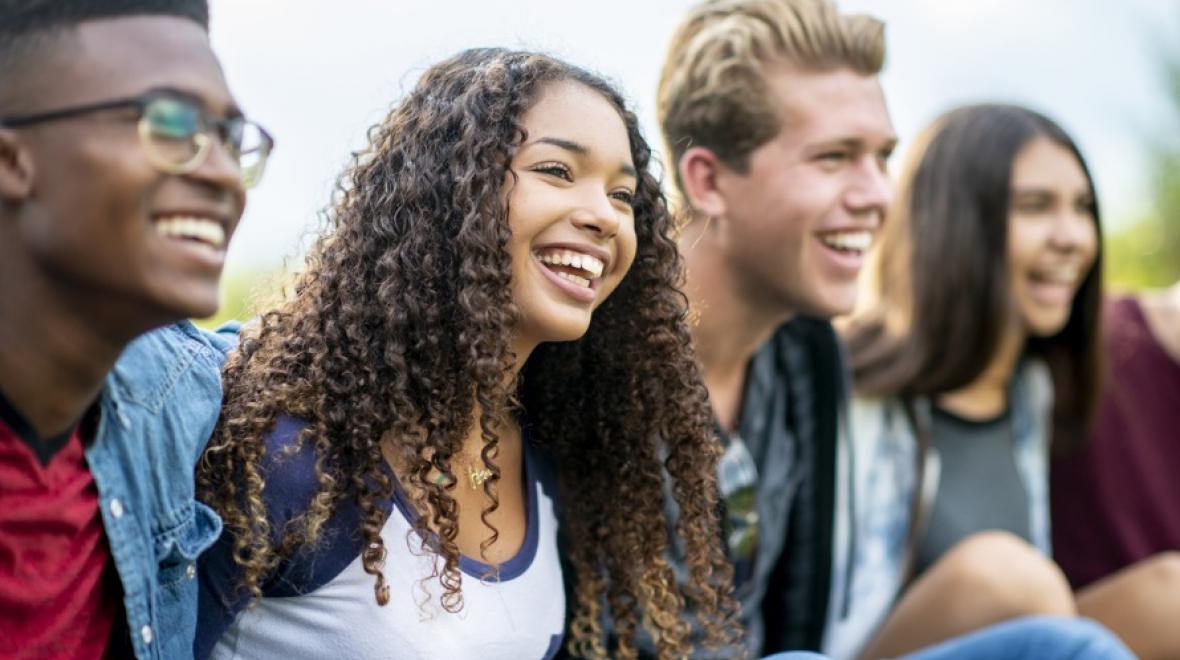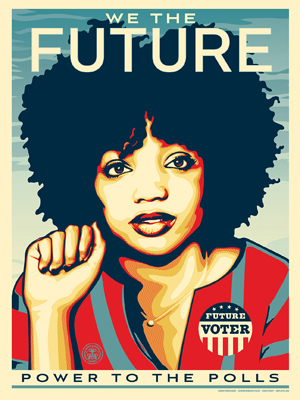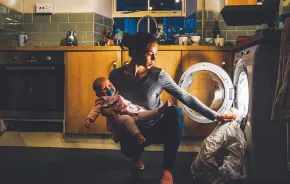
 This month, the Bill & Melinda Gates Foundation Discovery Center debuts “We the Future,” an interactive exhibition that spotlights the inspiring stories and accomplishments of 10 young leaders, icons who are working to catalyze a new era of human and environmental rights through their respective social change movements. The exhibit pedestals and builds on the work of Amplifier’s We the Future education campaign and was co-curated with the Discovery Center’s Youth Ambassador Program, a cohort of local high school students that develops youth-centered programs and organizes the center’s annual Teen Action Fair each March.
This month, the Bill & Melinda Gates Foundation Discovery Center debuts “We the Future,” an interactive exhibition that spotlights the inspiring stories and accomplishments of 10 young leaders, icons who are working to catalyze a new era of human and environmental rights through their respective social change movements. The exhibit pedestals and builds on the work of Amplifier’s We the Future education campaign and was co-curated with the Discovery Center’s Youth Ambassador Program, a cohort of local high school students that develops youth-centered programs and organizes the center’s annual Teen Action Fair each March.
Amplifier is a Seattle-based nonpartisan design lab that creates high-profile, nationwide media experiments to amplify grassroots social justice issues. The young leaders featured in the “We the Future” exhibit align with movements that encourage people to vote, address climate change, reconceive the immigration system, create more equity and opportunity in our education system, address gun violence and take other actions.
Editor's note: This article was sponsored by the Bill & Melinda Gates Foundation.
We caught up with Cleo Barnett, deputy director of Amplifier, to learn more about the campaign and upcoming exhibit.
How did Amplifier get its start?
Amplifier started in a backyard in Seattle; it was founded by Aaron Huey, a National Geographic photographer, and was [initially funded by] a media experiment grant through Stanford University. [This was] during a time when Aaron was exploring how he could take the messages that were created for inside National Geographic magazine and bring them out into the streets. The organization builds large-scale, nationwide media campaigns that amplify social movements and help shift the national narrative.
How did this particular campaign, We the Future, come about?
We’re a nonprofit organization, so we really do consider ourselves to be a public service. After our We the People campaign, we had all of these educators reaching out, asking for teaching tools and artwork to talk about social justice issues in their classrooms. We answered that call: We reached out to our community over the course of a year; we went into classrooms, we talked to movement leaders and youth leaders, and we asked them, “Who argues at the forefront of change in this country?” From that process, we developed a list of hundreds of names, and then had the very tough task of curating that down to an intersectional group of people who represent different communities, different ages, different geographic regions of the United States, different issue areas, in the hope that every student would feel themselves represented by at least one of the featured icons.
How were the educational materials that accompany the artwork developed?
For this campaign in particular, the young leaders collaborated with their organizations to lead the development of the lesson plans, and then we worked with a consultant, Maribel Gonzalez, who supported the young leaders and also ensured that all of the lesson plans would be appropriate for middle school and high school classrooms.
How were the artists selected?
[Like the selection process for the young leaders], it was a curatorial process to see what would be an interesting group of artists, each of whom would add something different. Shepard Fairey’s iconic style of art is very well known, and he’s just been so supportive of our organization from day one. Kate DeCiccio is also an educator; she has a really incredible way of working with her subjects. She photographs everyone she creates an artwork of, and the person gets to choose the photographs that she uses as the reference. Munk One is based in California and has a child of his own — he just brought a really interesting eye to this whole thing. And Rommy Torrico is an incredible artist, is undocumented and just shares a lot of the same identity stuff as the young leaders.
Talk a bit about the partnership with the Gates Foundation Discovery Center.
One thing that we’re always wrestling with at Amplifier is how we can most constructively and authentically contribute to the local Seattle art scene while being a two-person team building national campaigns. And it’s the same with the Discovery Center, where they’re always looking at how they can most effectively add to the conversation here in Seattle and be a hub and a meeting place for people to have really important conversations in the community. They have this beautiful space in downtown Seattle that a lot of people don’t know about, and though Amplifier’s work has a lot of visibility, we don’t have the capacity to have a full-time open space for people to convene. So, this is just such a powerful opportunity for us to both be able to share this artwork with the local community and visitors to Seattle.
One thing that has just been really amazing is working with their Youth Ambassadors. We’ve been building a relationship with them over the last two years — they’ve come to our space for screen-printing workshops, and we share about our work and learn about their work. This opportunity to really collaborate with their cohort of young leaders through the creation of this exhibition has been really empowering and exciting.
What has been most inspiring to you about the youth leaders you’ve met?
What you see is that they are ordinary people who have a drive and desire that’s based on a value. Whether it’s the value of desiring truth or desiring fairness, that drive has led them to become this extraordinary person. And, really, that’s something that every single one of us has the power within us to do. That’s what’s been most inspiring for me and what I hope audience members get out of this exhibition: All of us have the capacity to impact our community, impact our families, impact the world around us. It is just about taking action — and there are so many ways to do that.
What actions would you hope result from the campaign?
I hope that educators register for the program and have the courage to implement some of the lesson plans in the classroom. [Educators can register here.] In terms of youths, I hope that they feel empowered to help make a difference in shifting policies and culture in this country. And I really hope that we can provide people with tools to show them that, actually, we are stronger together and we can make a difference. We just have to show up and take action. For parents, I hope that you bring your children down to the exhibition and engage in dialogue there and also pick up some new tools for how to have these tough conversations around important issue areas that really impact all of us.
Any final reflections?
A year on from launching this campaign, I’m only now just really starting to understand the importance and value of identifying with people who don’t look like you. We are all in this together. And just because someone doesn’t look like you doesn’t mean that you can’t relate to them.
‘WE THE FUTURE: YOUNG LEADERS OF SOCIAL CHANGE’Oct. 3, 2019–March 21, 2020 Join the free community celebration: Oct. 5, 10 a.m.–6 p.m., Bill & Melinda Gates Foundation Discovery Center For more information and to RSVP, visit discovergates.org. The exhibition features the powerful stories of Xiuhtezcatl Martinez, Amanda Gorman, Leah the Activist, Ismael Nazario, Winter BreeAnne, Lydia X.Z. Brown, Lindsay Amer, Amanda Nguyen, Isra Chaker and Paul S. John — posted alongside iconic graphic portraits of each of these 10 young leaders by artists Shepard Fairey, Rommy Torrico, Munk One and Kate DeCiccio. The “We the Future” exhibition invites people of all ages and walks of life to imagine and become the change they want to see in the world through inspiring multimedia content, hands-on art-making opportunities, community dialogue and other programming. Free lesson plans and materials related to the 10 icons and their social justice movements are available to educators who register here. |
|
Sponsored by: |
 |











